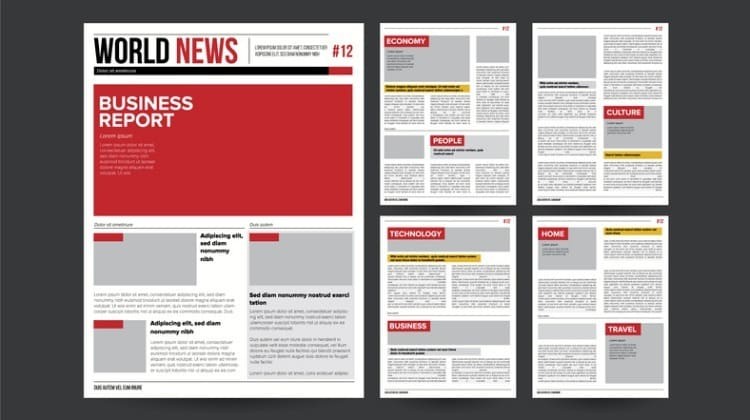7 Ad Headline Formulas to Get Your Campaigns Noticed
by Ana Gotter • March 8, 2019
Headlines are, hands down, the most difficult part of anything to write. It doesn’t matter if it’s a blog post, an ebook, an email subject line, or PPC ad campaigns. They’re your biggest shot to grab user attention and get them to click, and you typically only have a few characters to get that job done.
As someone who specializes in PPC copywriting, they were the bane of my existence until I figured out a few tricks to help me knock it out of the park every time.
PPC headlines have a huge influence on the success of your campaigns, and they need to be well-optimized for your specific goals and your audience. There’s a lot to keep track of, and writing good headlines can be difficult.
In this post, we’re going to go over some adaptable ad headline formulas for both Facebook and Google ads that will get your campaigns noticed, along with what you need to know about actually crafting the headlines on both platforms.
PPC Ad Headlines: The Basics
Headlines are your first chance to tell users why they should care enough to read or view the rest of your ad, and having a strong headline is the first step to getting customers to click. They are a crucial part of the copy. You’ve only got a few characters—make them count.
Google Ads
When you’re writing Google Ad headlines, they’ll appear at the top of your ad in three different sections. You get 30 characters for each section that create a combined 90 characters, but the sections are physically separated so they need to come across as distinct thoughts.
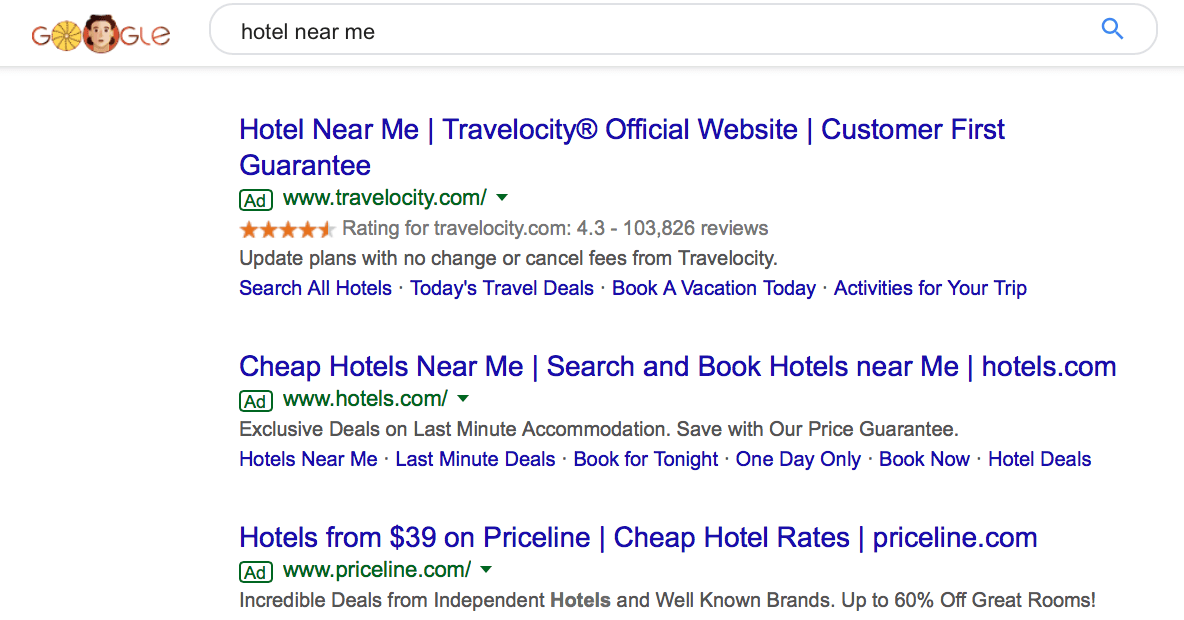
Your best bet here is to string together three relevant components that appeal to your target audience, sometimes opting for a description or key feature of your business alongside a promotion and a URL. We’ll look at specific strategies you can use to create these headlines soon.
Facebook Ads
Your Facebook headlines are going to be a little more flexible than your Google Ads headlines. There is no limit on character count, though you’ll only get 51 characters before it’s cut off on some placements, including mobile.
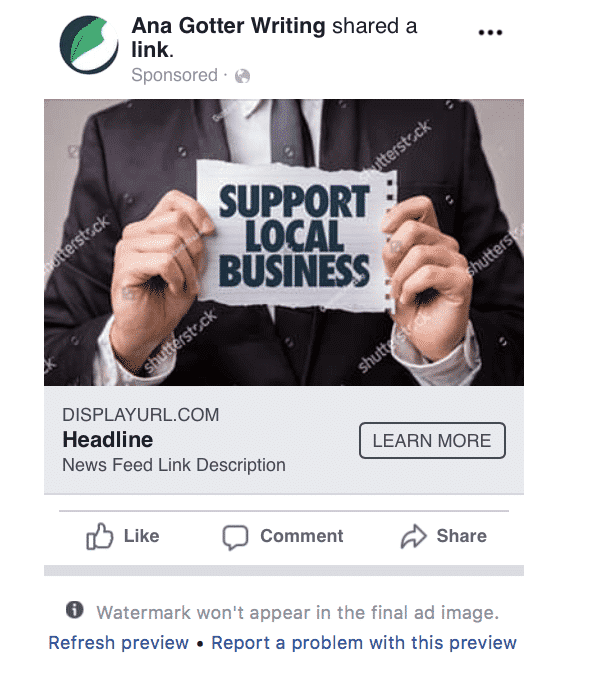
Because there’s a little more flexibility here, you can sometimes get a little more creative with the headlines. Using either a single sentence or the “Adjective. Adjective. Adjective.” format works well, and make sure to always use proper grammar and punctuation.
The “Tired of Your Problems?” Headline
This is an exceptionally popular and effective headline strategy, and it quickly isolates a user pain point and then uses it to capture user attention.
You might see this take the form of a headline like the following:
- “Tired of sore, calloused feet?”
- “Frustrated with complicated bookkeeping?”
- “Wish you could get a full night’s sleep?
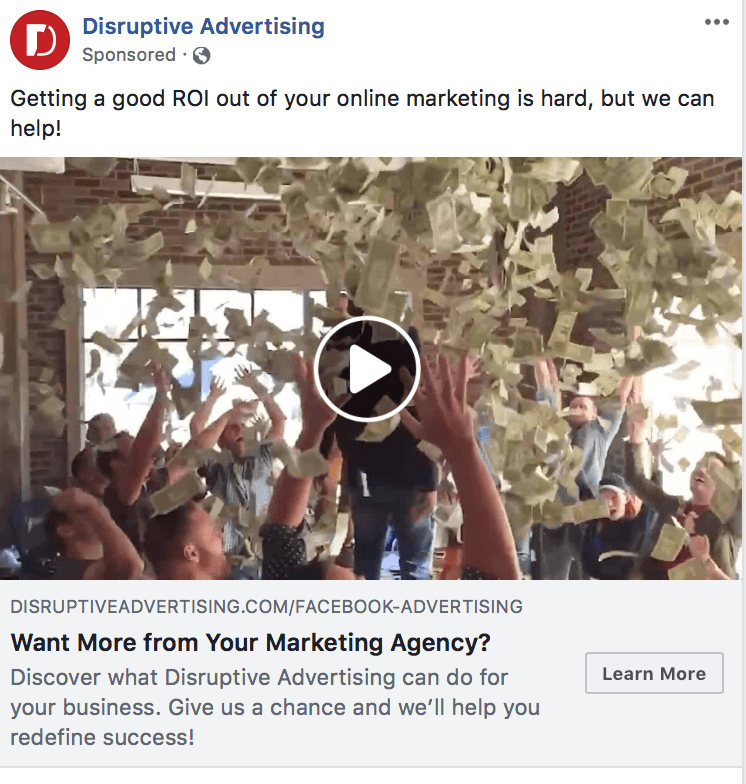
This question can take a positive spin on it too, as seen here:
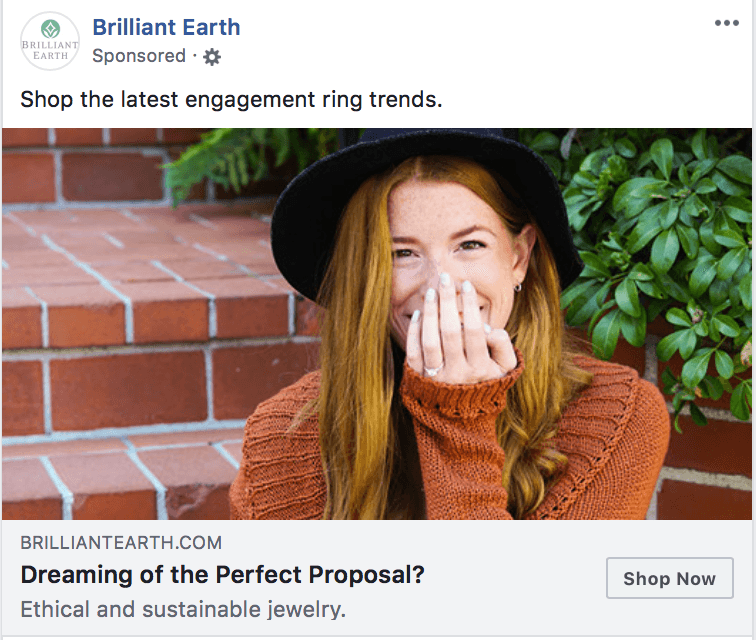
Another variation of this headline essentially promises to solve the problem for you, but doesn’t elaborate further. See the following:
- “Say goodbye to sore, calloused feet.”
- “Never have a bad night’s sleep again.”
- “Ditch the complicated bookkeeping.”
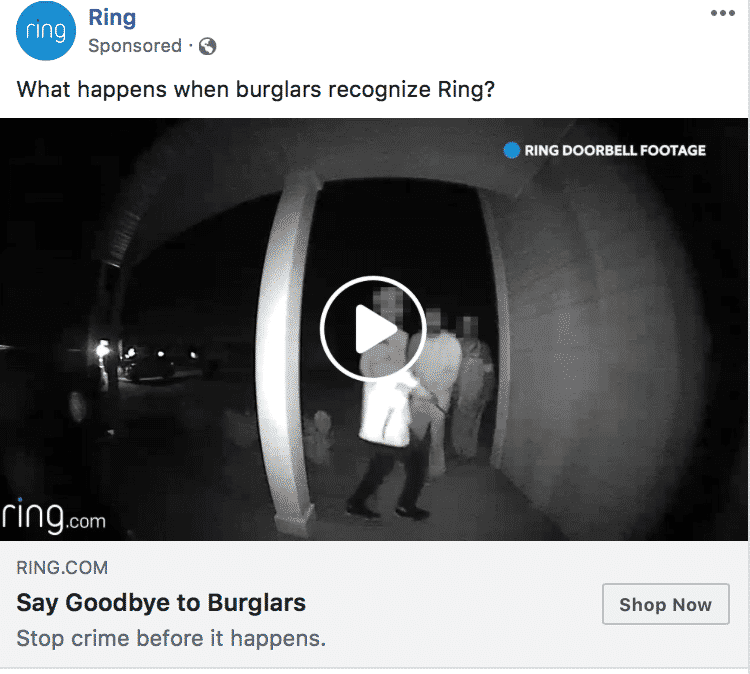
This strategy can work for Google Ads, but the tight character count can keep it restricted. Opt for something simple like “Never Go Broke” instead of “Trying to avoid bankruptcy?” Simplicity is key here.
The “Problem/Solution” Headline
This is another spin on the “I get your problems” approach, and it details a pain point and then immediately offers your business, product, or service as a solution.
Because headlines can have such tight character counts, the headline will often do one or the other. We saw the pain point be the focus of the headline in the strategy above; here, the solution is featured in the headline, and the problem is elaborated on more in the ad text.
In a lot of cases, explaining what you can do is a good option. See “Free yourself from paper receipts” below; it doesn’t just say “Get digital receipts,” it uses language that brings the pain point back into attention.
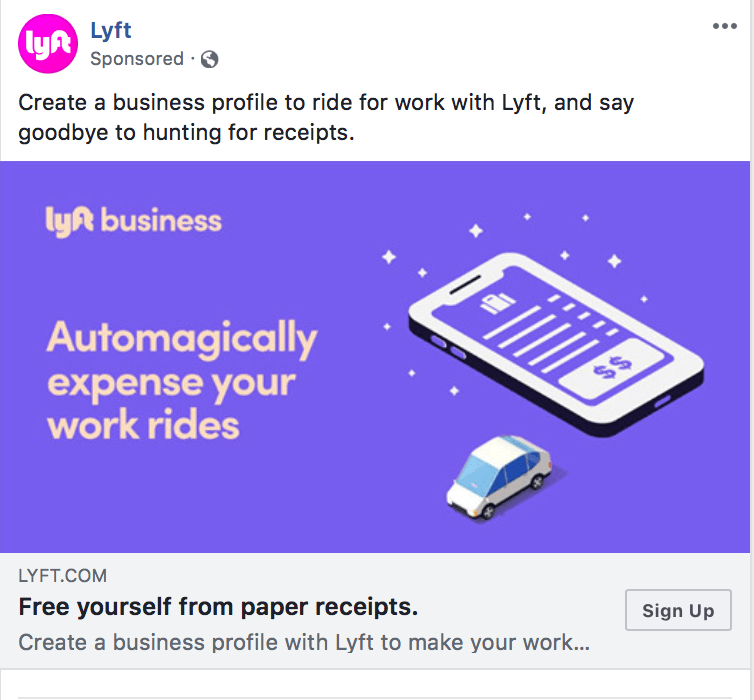
A great example of how to execute this headline formula in Google Ads can be seen here:

The ad addresses a problem (you need a designer) and then offers up a solution in the form of a CTA (hire an affordable designer now!). If you can show customers how you propose to solve their problems, you can get their attention and their click.
The “Too Good to Refuse” Headline
Go all Godfather here and make them an offer they can’t refuse. These headlines are great choices for Google Ads in general, and for remarketing campaigns on Facebook Ads where the customer is close to purchasing but needs that last, final nudge.
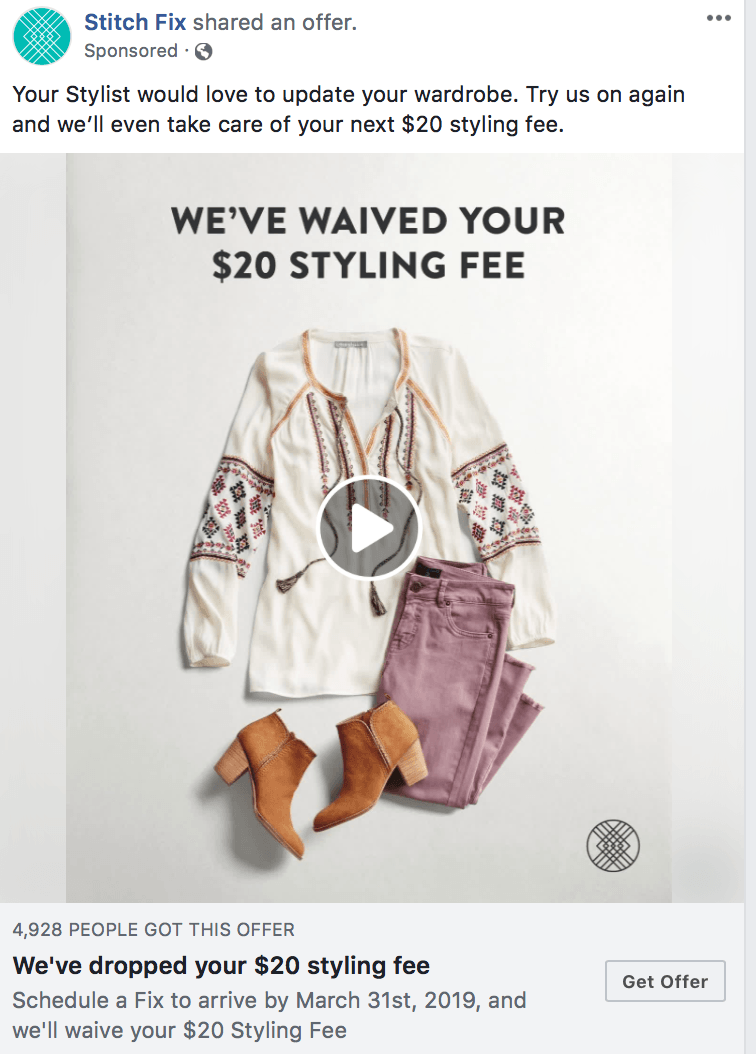
Spell out an offer and use the headline to really hammer it in. Use numbers, dollar signs, and percentage points to capture attention. Always add more details, if applicable, in the ad text, and if you’re using Facebook Ads or display ads, consider adding the details to your image or video.
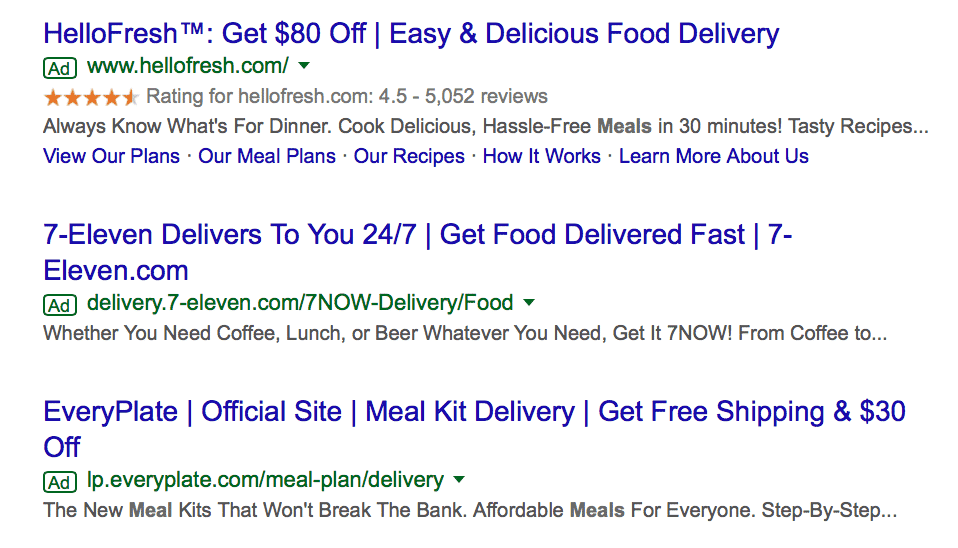
The “Feature-Focused” Headline
Sometimes the best way to promote your brand, products, or services is to focus in on features that differentiate you from the competition, or highlight features you know that users are searching for.
All you need to do for this one is pick a feature and list it clearly. Google Ad’s format works so that you can list up to three features if you choose to, but Facebook’s format typically works best if you choose a single feature in a headline, elaborate it on the ad text, and run split tests to see which features perform best.
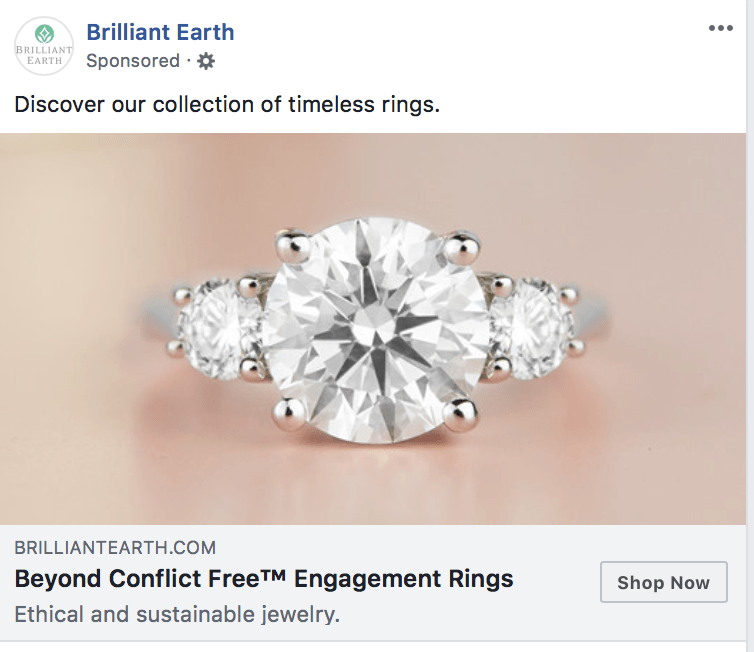
This might look like any of the following:
- “Stay safe with 24/7 motion sensor professional monitoring.”
- “Accessible-from-everywhere cloud accounting.”
- “Conflict-free diamonds.”
- “Hassle-free quotes.”

The “But Wait!” Headline
I like to call headlines focusing on overcoming objections the “but wait!” headlines because that’s essentially their job. They know that someone might look at your ad and either think it’s good to be true or wondering of all the catches and fine print that go with it. And this headline is your chance to say “Wait, nope, we’re different” before they click away, even though you aren’t actually saying those exact words.
This could take the form of the following:
- Fast, free returns.
- Hassle-free shopping.
- Guaranteed satisfaction.
It could also be more specific to your business, like “95% accuracy” and “Faster order delivery than you think.” It focuses on an objection that customers might have and tries to reassure or overcome them.

The “Do This Now” Headline
You can’t go wrong with using a CTA as a key part of your headline, because it makes sure that users are on the same page as you real fast. It also clarifies exactly what your ad is about and what you can offer them, which is actually a great advantage to users seeing their ad. They know what they can expect to happen.
Consider the following options:
- “Book your appointment now.”
- “Shop and save today.”
- “See what we can do for you.”
Depending on the characters you have available, you can keep it short or make it a little longer. If possible, add time-oriented words like “now,” “today,” or even a specific time deadline to the end of the headline; it can add in some urgency and actually increase clicks and conversions.

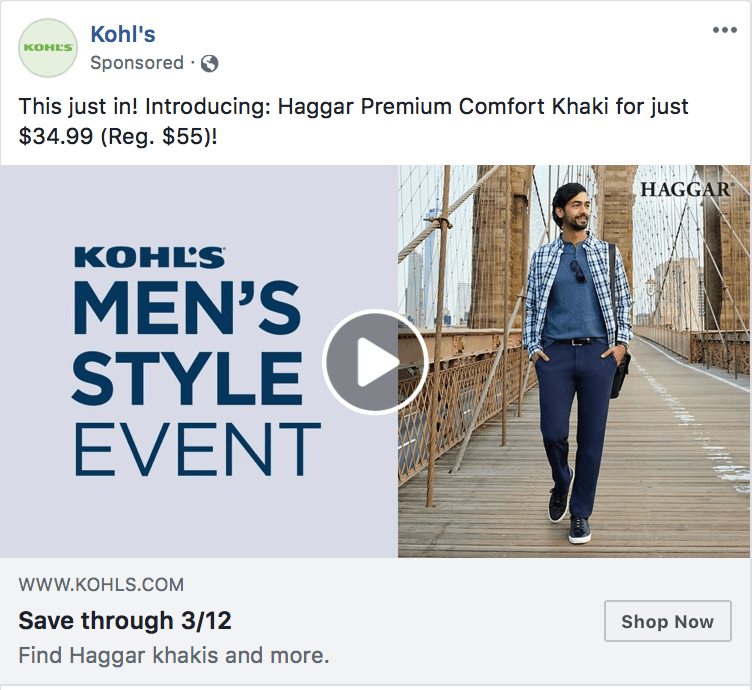
The “Clickbait” Headline
This is a pretty straightforward tactic, and it relies on some above-the-board clickbait strategies to create enticing headlines.
Take a look at the following:
- “You’ll never guess what we found.”
- “Can you believe these 4 fast facts?”
- “You’ll be shocked what our customers had to say.”
These headline ad formulas work particularly well when you’re promoting content, which is often a good call for brand awareness campaigns. They also work equally well on Facebook Ads and on Google Ads, along with other similar platforms like Bing or Instagram, too.

You can also use these headlines to encourage video views. Think a “You have to see it to believe it” style headline that almost dares users to watch. This is a great strategy for Facebook Ads.
Conclusion
Copywriting can be overwhelming, and your best bet to increase conversions is to pick a strategy and stick with it for your whole campaign, and then just write about it well.
These ad headline formulas can give you what you need to do exactly that, though it’s important to note that copywriting isn’t necessarily formulaic in nature. It’s essential to adapt these headline formulas for your ad campaigns instead of sticking to them verbatim, as it will allow you to individualize the copy your audience and what they need. Use the headlines as a starting point, let your knowledge of your audience guide where you take it from there, and split test the living daylights out of your copy to see what actually works.
Want a little extra help with your PPC campaigns? We offer services for both Google Ads and Facebook Ads. Learn more here.
What do you think? Have you ever used copy similar to our ad headline formulas? Which would you be most likely to respond to as a user? Share your thoughts and questions in the comments below!

